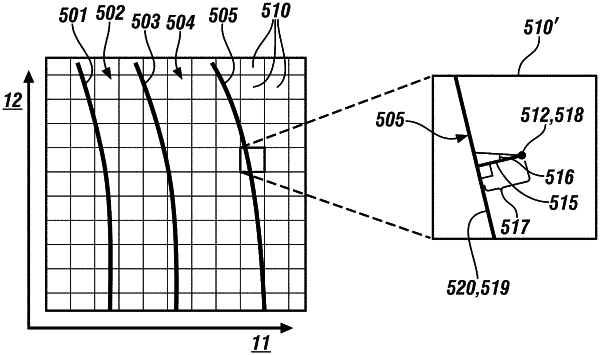| CPC B60W 50/0097 (2013.01) [B60W 10/04 (2013.01); B60W 10/18 (2013.01); B60W 10/20 (2013.01); G06N 3/04 (2013.01); G06N 3/08 (2013.01); B60W 30/09 (2013.01); B60W 30/12 (2013.01); B60W 30/14 (2013.01); B60W 30/18163 (2013.01); G01C 21/26 (2013.01)] | 19 Claims |

|
1. A method for detecting a travel lane proximal to a vehicle, the method comprising:
capturing, via an imaging sensor, a field-of-view (FOV) image of a viewable region that includes a travel surface;
converting, via an artificial neural network, the FOV image to a plurality of feature maps;
projecting, via an inverse perspective mapping routine, the plurality of feature maps to a bird's eye view (BEV) orthographic grid, wherein the BEV orthographic grid includes a plurality of grid sections representing a ground truth of the travel surface, wherein the feature maps include travel lane segments and feature embeddings in the plurality of grid sections of the BEV orthographic grid, wherein each of the plurality of grid sections includes an elevation, an offset magnitude, and an angle of an orthogonal line arranged between a center point of the respective grid section and a lane edge of the respective travel lane segment that is disposed within the respective grid section;
concatenating the travel lane segments for the plurality of grid sections based upon the feature embeddings to form a predicted lane in the BEV orthographic grid, wherein the predicted lane is associated with the travel lane proximal to the vehicle; and
controlling operation of the vehicle based upon the predicted lane.
|